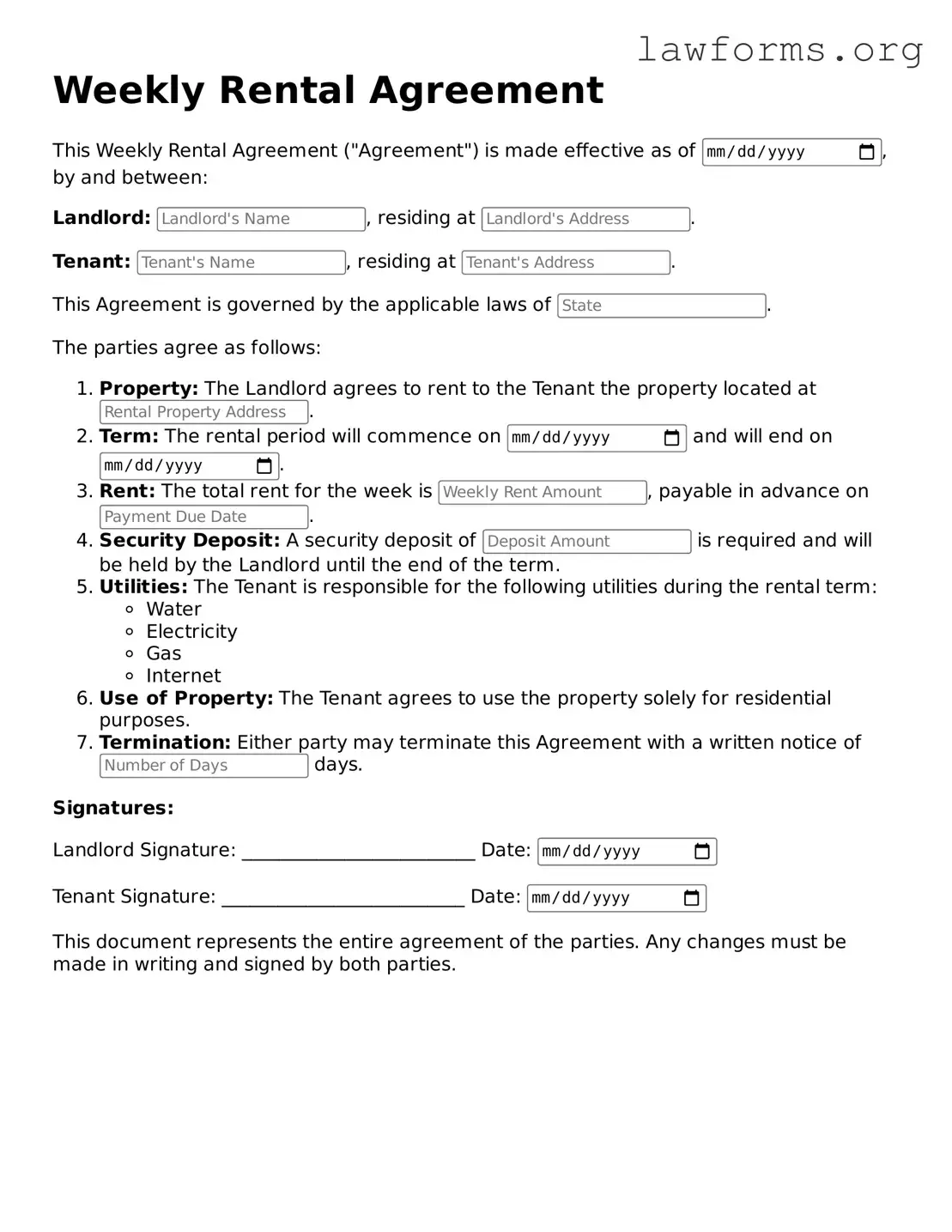Valid Weekly Rental Agreement Form
A Weekly Rental Agreement is a legal document that outlines the terms and conditions for renting a property on a weekly basis. This agreement protects both the landlord and the tenant by clearly stating the responsibilities and expectations of each party. If you're ready to create your own agreement, fill out the form by clicking the button below.
Customize Document Online
